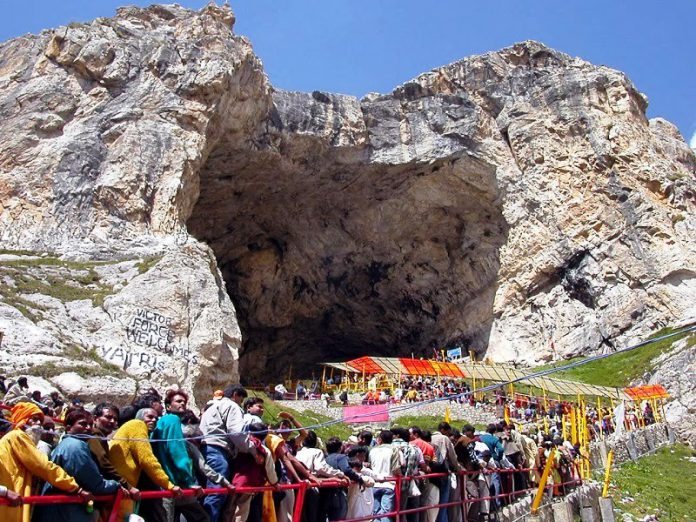The route leading to the sacred Amarnath cave in Jammu and Kashmir, situated at an elevation of about 3,888 meters above sea level, has been made accessible for vehicular travel.
The Border Roads Organisation (BRO), entrusted with the maintenance of the roads leading to the cave, has successfully extended the route all the way to the shrine, covering the road from Dumail to the cave through the Baltal base camp in District Ganderbal.
This ambitious endeavor is part of the BRO’s ‘Project Beacon,’ with the Pahalgam Development Authority (PDA) overseeing the maintenance of the Pahalgam road in Anantnag district, and the Public Works Department (PWD) of the J-K government managing the Baltal route in the Ganderbal district.
The road extension holds the promise of greater convenience and accessibility for pilgrims undertaking the Amarnath Yatra.
The cave of Shri Amarnath Ji, located at an altitude of approximately 3,888 meters above sea level, is set to have a vehicular road. The Border Roads Organization (BRO) has been widening the cave routes, and small pickup vehicles were used near the holy cave for ongoing work. Plans include constructing a 10.8 km long tunnel between Sheshnag and Panchtarni and a five-kilometer long paved road from Panchtarni to the holy cave to ensure a safe journey for pilgrims, particularly in adverse weather conditions.
Work is also in progress on the Baltal route, a 14-kilometer stretch leading up to the cave. Union Minister for Road Transport and Highways, Nitin Gadkari, announced the completion of the 4-laning project of Srinagar-Jammu National Highway, which would significantly reduce travel time between the two capital cities. He also sanctioned a 110-kilometer long four-lane road to the holy cave shrine in Pahalgam.
Nitin Gadkari, union minister further revealed efforts to complete the 670 km-long Delhi-Amritsar-Katra Green Expressway and highlighted the project’s importance before the upcoming general elections.
“These developments are part of a comprehensive plan to improve connectivity and infrastructure in the region,” he said.
However, this expansion of the road to the Amarnath shrine has not been without controversy.
Mohit Bhan, a spokesperson for the PDP, has raised concerns about the urbanization of religious sites for political gain and the potential ecological impact. Bhan expressed criticism, stating, “This is not history; it’s the biggest crime one can commit to Hinduism and its faith in nature.” He emphasized the spiritual connection of Hindu pilgrimages to the lap of the Himalayas and decried the transformation of religious pilgrimages into mere picnic spots for political gains.
National Conference (NC) leader Omar Abdullah has also questioned the construction of the motorable road, expressing reservations about tampering with the environment and highlighting the tradition of locals carrying yatris on their shoulders during the yatra. He argued that allowing vehicles in such locations could be detrimental to their preservation and pointed out that facing challenges during religious pilgrimages is not unusual.
In contrast, the official handle of the Bhartiya Janta Party (BJP) Jammu and Kashmir celebrated the opening of the road, dismissing criticism as unwarranted and celebrating the move as a benevolent one.
The extension of the road to the Amarnath shrine represents a significant development in improving access to this sacred site, albeit amidst ongoing debate and criticism regarding the environmental and spiritual implications of this expansion.
